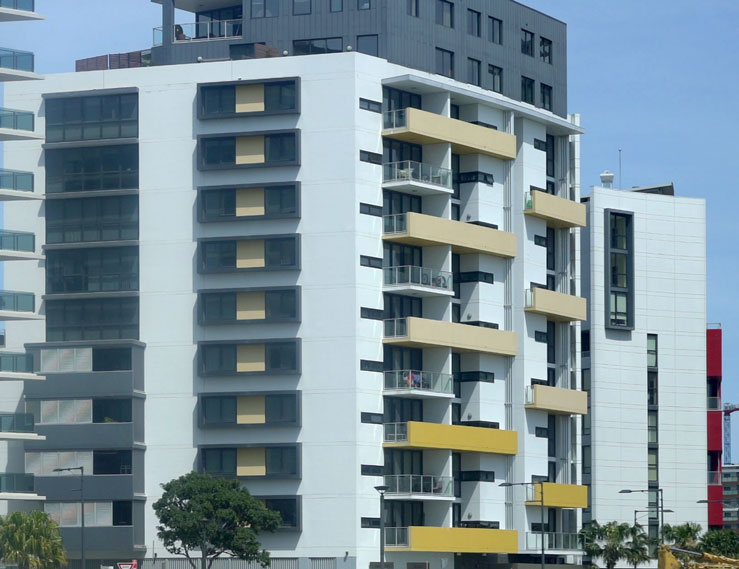Incoming NSW premier Gladys Berejiklian and federal Treasurer Scott Morrison have raised expectations they will actually do something about unaffordable housing.
With capital city median house prices cooling but still relentlessly rising there is broad consensus that supply, in the form of more land release and fast-tracked apartment development, will never bring acquisition costs down for young home buyers.
Demand is also relentless through population growth from migration and the natural birth rate. Australia is on track to reach 40 million people by 2055. The Sydney home-unit tsar Harry Triguboff has become Australia’s richest man tracking demand through migration and building blocks of flats to cash in.
Endemically low interest rates have pumped up prices in hotly competitive city real estate markets. The federal government has failed to stop the distorting impact of too-generous negative gearing with aggressive property investors now building substantial multi-dwelling portfolios. We are becoming a nation of landlords.
NSW Opposition leader Luke Foley on Friday produced State Revenue Office figures showing a 61 percent growth in investor-owned property over the past three years.
Premier Berejiklian has said an “average, hard working” person should be able to afford a home in Sydney. But first-home buyer numbers have dropped from 18 per cent in 2011 to 8 per cent of total purchases today.
Hey Barnaby … there are no jobs in Tamworth
Why can’t people abandon their aspiration for a harbour view and move to an eminently affordable house in Tamworth, Deputy Prime Minister Barnaby Joyce asked in his deeply superficial contribution to the national affordability debate.
The answer is that the jobs are in the cities. There are fewer jobs in Tamworth, as there are in all Australian regional towns.
To buy a house you need a job. A worker on $75,000 a year with no dependants or credit card debt can borrow $512,000 for housing on this income. That would buy this income earner a good house in Tamworth, but at current prices, only a studio or one-bedroom apartment over-looking an industrial bin (forget the harbour view) in Sydney. You can add in Melbourne, Brisbane, Adelaide, Perth and Hobart to this calculation with some variations.
Young couples, each in full-time work, can combine their incomes to go deeper into debt to acquire their first home, and many do. But the barriers to entry remain extortionate, leading to the recent ‘smashed avocado’ kerfuffle where a demographer provocateur, Bernard Salt, lamented that millennials now preferred to spend $22 on this delicacy rather than save up for a house deposit.
Young people have given up, staying at home with mum and dad or sharing accommodation indefinitely, well past their student days.
What are legislators for?
Treasurer Scott Morrison has been fact-finding in London to see how the UK has addressed the affordability problem. A package of measures could come in the May federal budget. In spite of dissent from some Liberal MPs, any reform is not expected to include confronting the market distortion of negative gearing.
Premier Berejiklian is gathering insights from the fine policy minds available to her in the NSW government and is expected to announce some lever-pulling soon. First-home buyers’ grants and stamp duty holiday concessions can help to get more young people deposit-ready to buy, but they compete in already hot markets further pushing up prices.
The answer is in legislation. This will be derided as ‘a nanny state’ solution by ideologues and rapacious developers but with the market having so demonstrably failed to deliver the dream of home ownership for ‘average, hard-working people’, now is the time for a state plan. After all, what are legislators for? Do they always have to stand around, thumb in bum and mind in neutral? Why do we pay their salaries and helicopter expenses?
Let us now see if Premier Berejiklian is prepared to enact laws to establish state-wide inclusionary zoning for affordable housing. This has been done in London and New York. This would establish a public land register for affordable and social housing. The Greater Sydney Commission, a NSW planning agency headed by Lucy Turnbull, has already recommended government mandating six district plans for affordable housing for low-income households ranging from $42,300 to $67,600 per year.
The Committee for Sydney, a think tank, has proposed that under-utilised land could be slugged with higher taxes to get private owners to release it from their speculative ‘land banking’ grip. Most affordable housing in London, both freehold and rental, is high density around transport hubs for easier job access.
In the UK there is a social/affordable housing bond market which could be adapted by the Australian equivalent state-owned housing finance corporations to kick start affordable housing development with the not-for-profit and private sectors including investment-hungry superannuation funds.
So the answer to unaffordable housing in Australia? L-A-W … law.

